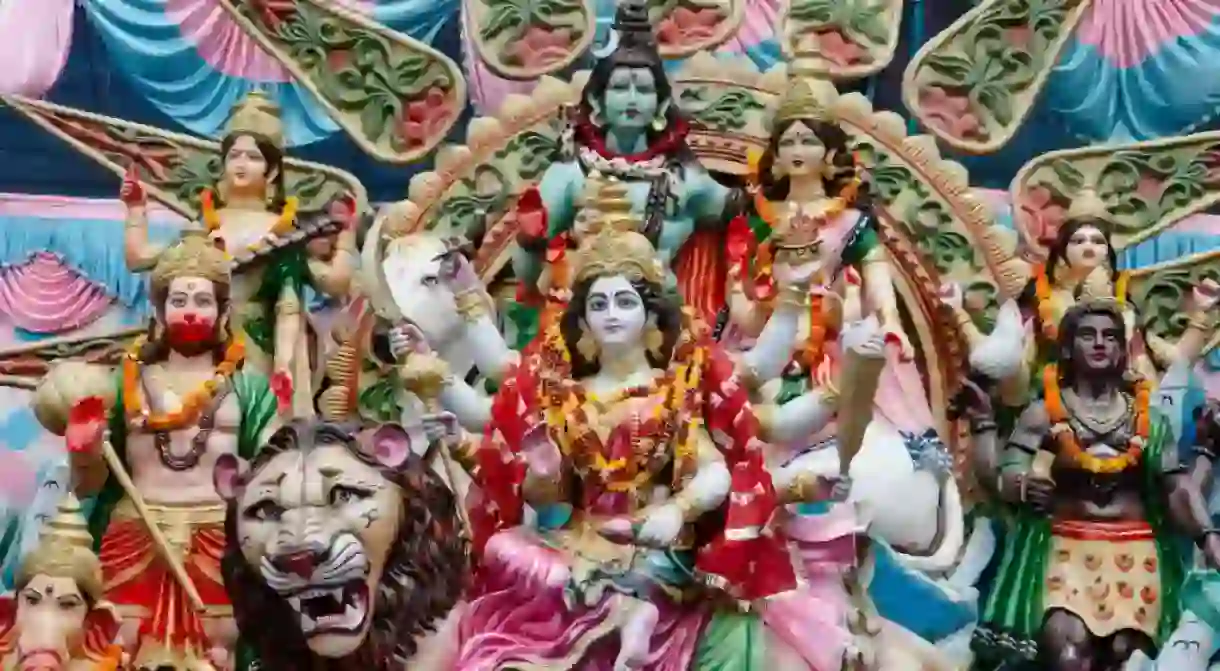Kanwar Yatra Festival: The Hindu Calendar's Most Anticipated Religious Event

Kanwar Yatra, considered to be among the most anticipated religious events on the Hindu calendar, is a massive annual pilgrimage in India dedicated to the Hindu deity, Lord Shiva. This event witnesses millions of devotees coming together from across the country near the famed shrines of the deity seeking his blessings. Read on to discover more about the festival and its origin.
Until the early 19th century, only hermits and saints attended this pilgrimage. Today, however, hundreds and thousands of devotees from all over India participate, with each passing year garnering the event even more international popularity.

What is Kanwar Yatra?
Kanwar refers to a bamboo stick with pots tied to its two ends, with the devotees of Lord Shiva known as the ‘Kanwariyas’ who carry the Kanwar on their shoulders.
It involves the fetching of the holy water, traditionally called ‘Ganga Jal’ from the river Ganga or its tributaries at various Hindu pilgrimage sites, and is carried across hundreds of miles to their respective hometowns. And, on the occasion of Maha Shivratri or New Moon Day in the fifth month of the Hindu calendar (Shravan month), the devotees annoint the Shiva linga (representation of the Hindu deity, Shiva) with holy water at the local Shiva temple. The annointment of holy water is considered to be the best way to seek blessings from the deity.



When does it happen?
The Kanwar Yatra is held every year in the Shraavana or Sawan months (July-August), which are marked as auspicious months in the Hindu calendar.


The origins
The Kanwar Yatra has its origin in the ‘Churning of the Ocean Milk’ (also, known as ‘Samudra Manthan’). According to religious texts, the fifth month of the Hindu year saw both Gods and Demons churn together ocean milk to get the nectar of immortality called ‘Amrita’. As a result, 14 different kinds of treasures were born, including the vicious poison known as Halahala, which had the ability to destroy earth. In order to save the planet, Lord Shiva gulped down the poison, with his neck turning blue as he suffered from extreme heat. Legend has it that to alleviate the effect of the vicious venom and release Lord Shiva from the suffering, Ravana, the King of Lanka and staunch devotee of Lord Shiva, bought the holy water by using Kanwar and poured it over him at the Pura Mahadev Temple.
From then on it became a custom among the Lord Shiva devotees to fetch holy water from the shrines of Lord Shiva during this month and offer it to the Shivalinga in the local temple, thus seeking blessings from the deity and thanking him for all the fortunate things in life.


The Journey
The pilgrims can be seen making an over 150-200 kilometers (93-124 miles) long trek in traditional saffron garbs with sacred ash on the forehead, Rudraksh Mala around their neck and Kanwars held across their shoulders. While some of the pilgrims opt to reach the Haridwar by bus, train or bike, there are many groups who make this religious journey on foot (mostly, barefoot). The yatra takes almost four to five days to complete on foot and, in between, the pilgrims stop at the camps and makeshift stands along the trail.
The journey is arduous, but this does not stop the devotees, who walk with great energy and enthusiasm towards their destination, singing hymns of Lord Shiva. Also, ‘Bol-Bam’ chants reverberate during the entire journey. This yatra is not only limited to men, women also take part with utmost zeal and fervour.


Rules and regulations for Pilgrims see non-vegetarian food, alcohol and tobacco strictly prohibited. The devotees are required to maintain cleanliness and are forbidden to use bed and articles made of leather.
The Rituals
In the holy city of Haridwar, prayer for Ganga river, known as aarti, is performed by the priests at sunrise and sunset every day. These prayers are a celebration of the river Ganga. Throughout the day, devotees descend into the holy water to bathe, part of an ancient ritual of purification of body, mind and soul, and a step closer to salvation. The devotees then offer the holy water to the local Shiva temple and also fill their pots with it and carry it pots in Kanwars to their homeland where they bathe the Shivalinga with it. A similar ritual is carried out across all the shrines of Lord Shiva.
It is said that the holy water pot should not touch the ground until consecration. However, there are several makeshift stands across the journey where the pot could be kept and pilgrims can take some rest. Plus, these stands have medical facilities and food stalls.
Because of the sheer number of devotees taking part in this yatra, safety measures are taken care of by the Government.
















